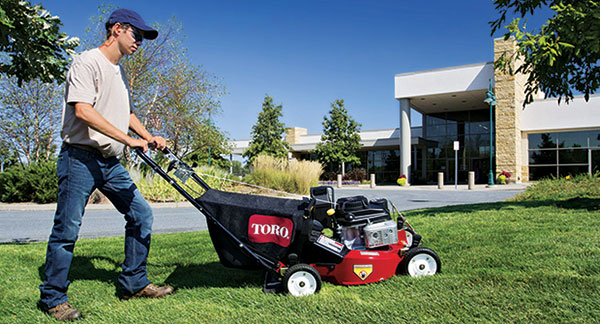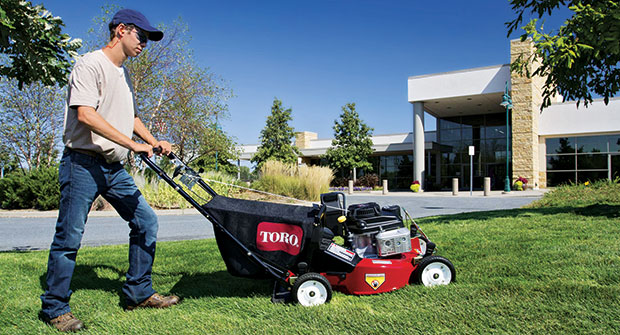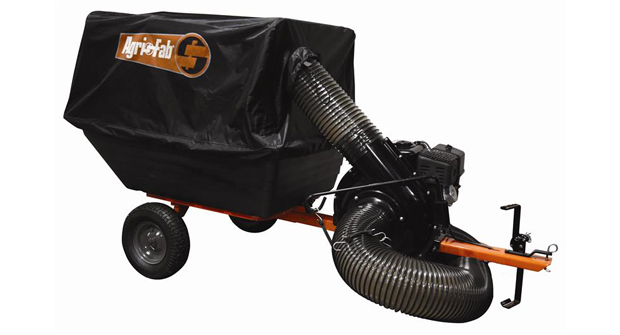
When determining what type of mower to use, it’s important to first look at the site, says Paul Fraynd, CEO of Sun Valley Landscaping in Omaha, Neb.
Often, small, tight areas such as parking lot islands, fenced-in backyards, hillsides and spaces with a lot of obstacles call for smaller mowers. Sun Valley Landscaping uses 21- and 30-inch mowers for many of its residential customers.
“Generally, guys try to use the largest possible mower they can fit on a property, but oftentimes that doesn’t deliver the best cut,” Fraynd says. “We’ve found that the smaller mowers don’t cause any turf damage compared to some of the larger mowers.”
He says the philosophy takes some training for crews to get used to — especially since using a smaller mower means making more passes — but crew members notice superior cut quality with fewer turnaround marks and ruts. Additionally, Fraynd says using smaller mowers in residential areas may even attract potential clients who value a quality cut.
Fraynd notes that it all starts with the sales team. They should bid areas according to what type of mower will be used, as production rates vary.
“One acre of flat, wide-open area is going to be different than 1 acre of smaller areas, so plan ahead so you can give your guys a lot of time to do the proper job,” he says.

John Deere
Carl Agee
Product marketing manager
Walk-behinds are a great option for equipment fleets because they offer a machine form that’s easy to maneuver, compact and versatile. For those who maintain smaller yards or tight spaces with obstacles, a walk-behind mower might be the right solution to enhance a fleet. Additionally, walk-behinds can tackle a variety of terrains, from hills to flat spaces, giving these mowers an advantage over other machine forms. When selecting and using a walk-behind mower, there are a few things to consider. With the operator controls, a comfortable hand position ensures optimal comfort during operation. This can minimize operator fatigue and increase productivity. For smooth operation, a hydrostatic drive system allows for infinite speeds in forward and reverse that improve the maneuvering capability in varying terrain, enabling the machine to do the work, not the operator.

Honda Power Equipment
Elisha Lipscomb
Senior marketing strategist, lawn & garden
Walk-behind mowers are manufactured with a variety of transmissions, drive trains and mulching technologies that differentiate one model from another. Selecting the right lawn mower starts with sizing up the lawn. There’s a direct correlation between the square footage to be mowed and the cutting width required in a lawn mower. The type of terrain is another important factor. Knowing whether the area is flat or hilly, rough or smooth dictates whether or not the lawn mower model should be self-propelled, should have adjustable wheel height or should have a rear or side bagger. And, no matter how you cut it, properly maintaining a lawn has everything to do with environmental responsibility. Increasingly, ergonomic industrial designers are creating functional, comfortable and easy-to-use products. Lawn mowing should be as productive and effortless as possible. Productivity suffers when the operator has to constantly grip the handlebars to increase speed or adjust a jerking mower on an incline or wrestle to maneuver it onto a truck or into storage.
Husqvarna
Giovanni Crespi
Director of product management
We foresee in the U.S. that smaller applications are growing. Properties are shrinking in terms of size. We foresee, based on other industry statistics, that battery is taking a large component of this (small walk-behind) business. In most cases, using a gas engine creates issues in terms of startability. There are a lot of applications where smaller walk-behinds can execute the full task where traditional riders or stand-ons aren’t able to. For example, there are situations in public spaces where there are smaller-detail applications, and walk-behinds are suitable to those applications. There are critical areas from an incline perspective where you can’t use stand-ons. Plus, for residential areas, battery walk-behinds reduce the amount of noise. From a service perspective, we push our landscapers to make sure they’re keeping up with maintenance and service.
Toro Co.
Mitch Hoffman
Marketing manager
Many landscape contractors use commercial walk-behind mowers to reach hard-to-access areas or for trim work, before tackling wide-open areas with a zero-turn mower or a stand-on mower. Contractors can maximize their productivity out in the field before even stepping foot on a customer’s property by selecting a walk-behind mower that has time-saving features engineered into the unit itself. For example, some walk-behinds offer outstanding maneuverability in a compact package, all while boasting agility and productivity on the job.


